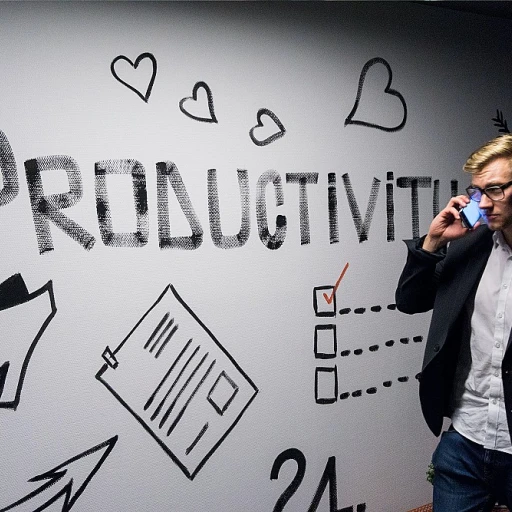Understanding the Unique Challenges in Collections
Tackling Unique Obstacles in Debt Collection
The collections industry presents distinct challenges that can complicate employee retention efforts. Due to the nature of the job, team members often work under high pressure, balancing customer satisfaction with achieving collection targets. This environment can lead to elevated turnover rates compared to other sectors. Thus, retaining skilled individuals in these roles requires a strategic approach.
Debt collection tasks frequently involve navigating difficult conversations with clients, impacting team morale and engagement. Employees might feel overwhelmed, affecting their overall job satisfaction. Consequently, organizations need to adopt targeted retention strategies that address these industry-specific challenges.
Moreover, understanding the broader legal framework governing HR in the collections sector is essential for creating a fair and supportive work environment. By doing so, organizations can ensure compliance and foster a sense of trust among their workforce. Integrating compliance into daily operations aids in reducing friction and strengthening employee engagement.
Company culture also plays a pivotal role in influencing turnover. A positive work atmosphere can significantly boost employee satisfaction and retention. When employees feel appreciated and understood, they are more likely to stay engaged and committed to their roles, contributing to lower turnover rates.
The challenges in the collections arena necessitate customized solutions. By understanding these unique obstacles, businesses can better develop and implement effective retention strategies that keep their organization's top talent within the team.
Creating a Supportive Work Environment
Building a Culture that Supports Staff
Creating a supportive work environment is crucial for retaining employees in collection departments. This aspect of employee retention strategies is centered around cultivating a workplace culture where employees feel valued, connected, and engaged. A positive work environment reduces turnover rates by ensuring that employees have the support they need to perform their jobs effectively. It is important for team members to believe that their contributions are appreciated, and that they are integral to the organization’s success. Here are some best practices to foster a supportive work environment:- Encourage open communication: A culture that promotes dialogue allows team members to express their concerns and ideas freely. This not only boosts employee satisfaction but also encourages innovation.
- Promote teamwork: Effective collaboration among team members can enhance job performance and employee engagement. Establishing clear team roles and responsibilities ensures that everyone’s talents are utilized.
- Implement flexible work arrangements: Offering flexible work hours or remote work can increase retention rates, especially in today's industry where work-life balance is highly valued by top talent.
- Support career development: Another key to retention strategy is providing opportunities for employee growth. This can involve skill development programs or career advancement paths within the organization.
- Celebrate achievements: Recognizing employee contributions, whether big or small, fosters a culture of appreciation and motivation.
Implementing Professional Development Programs
Professional Growth: Investing in Your Team's Future
In the dynamic field of collections, investing in employee development is not merely a retention strategy but an imperative to adapt to industry advancements. Employees who see a clear path for career development are more likely to remain committed to the organization, enhancing both their own job satisfaction and the company’s retention rate.
A successful approach includes a variety of professional development programs that cater to different learning styles and career aspirations within the team. Consider introducing:
- Workshops and Seminars: Regularly scheduled events that educate on new collection techniques and industry updates help employees feel connected to the company's mission and more skilled in their roles.
- Mentorship Opportunities: Pairing younger team members with seasoned professionals facilitates the sharing of valuable experiences, fostering a positive work environment and enhancing employee engagement.
- Online Learning Platforms: Offering access to digital courses allows employees to upskill at their own pace, crucial for integrating flexible work schedules.
Moreover, cultivating a workplace culture that encourages feedback and open communication can significantly boost employee satisfaction. Engaging in ongoing discussions about professional objectives ensures that employees know the organization values their growth.
By prioritizing professional development, organizations can retain top talent while reducing turnover rates. Those in leadership positions must recognize the benefits that comprehensive training and development initiatives bring to the entire team, ultimately contributing to a more cohesive, motivated team environment.
Offering Competitive Compensation and Benefits
Competitive Compensation: A Key to Employee Satisfaction
In the fast-paced world of collections, attracting and retaining top talent requires more than just a positive work environment. Offering competitive compensation and benefits is crucial for reducing turnover rates and enhancing employee retention. As organizations strive to keep their best employees, understanding the industry standards for pay and benefits can set your company apart.
One of the primary reasons employees leave their jobs is inadequate compensation. By ensuring that your organization offers salaries that meet or exceed industry averages, you demonstrate a commitment to valuing your team members. This not only helps in retaining current employees but also attracts new talent who are seeking opportunities in a company that appreciates their contributions.
Benefits Beyond the Paycheck
While salary is a significant factor, comprehensive benefits packages play a vital role in employee retention strategies. Health insurance, retirement plans, and flexible work arrangements are some of the benefits that can enhance employee satisfaction. These offerings contribute to a positive work culture where employees feel supported and valued.
Additionally, providing opportunities for career development and professional growth can further engage employees. When team members see a clear path for advancement within the organization, they are more likely to remain committed for the long term.
Creating a Culture of Recognition
Recognizing and rewarding employee contributions is another effective strategy for improving retention rates. By acknowledging the hard work and achievements of your team, you foster a culture of appreciation and motivation. This recognition can take various forms, from monetary bonuses to public acknowledgment of achievements.
In conclusion, offering competitive compensation and benefits is a fundamental component of any successful employee retention strategy. By investing in your employees and creating a supportive work environment, you can reduce turnover and build a dedicated, high-performing team.








